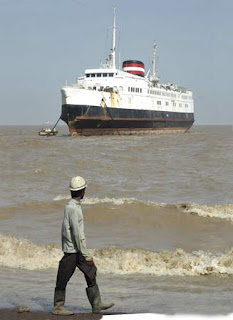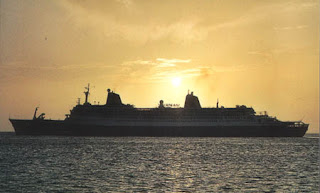Blue Lady Does a Riky & Demolishes the Clemenceau precedent

Supreme Court is yet to hear the matter regarding Riky ship although it preceded the Blue Lady case that was decided with its orders of 6th and 11th September, 2007. Like Riky , first a ship with dubious credentials leaves the shores of Germany. Then a in spite of manifest act of fraudulent misrepresentations month later, Indian Supreme Court allowed it to anchor even in the absence of legal grounds at Alang, Gujarat's massive shipbreaking yard, on humanitarian considerations. Unlike Clemenceau, this ship named Blue Lady(SS Norway, SS France)sailed through the law to live in the infamous company of Kong Frederik IX" alias "Frederik" alias "Riky" that sailed under the flag of an unknown country named Roxa. Blue Lady is unusual for the price at which it was bought at one stage. The price of this 16 floor and 315 meter long ship is 10 dollars. GIVEN BELOW IS A SHORT NOTE BY SANJAY PARIKH, ADVOCATE FOR THE PETITIONER ON THE GENERAL RECOMMENDATIONS OF TEC


